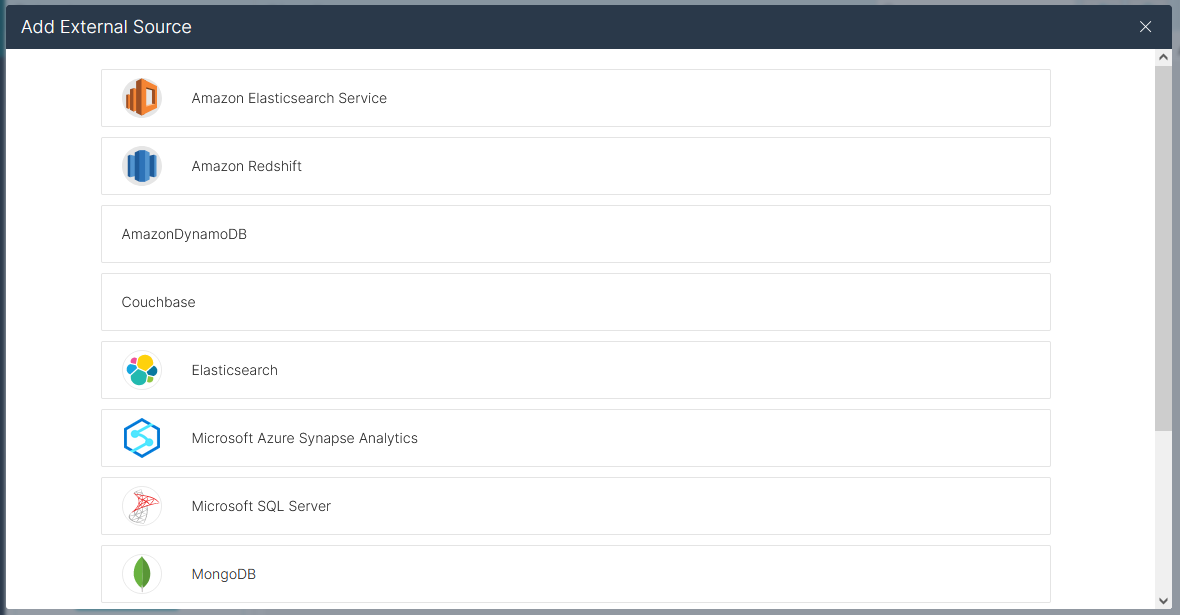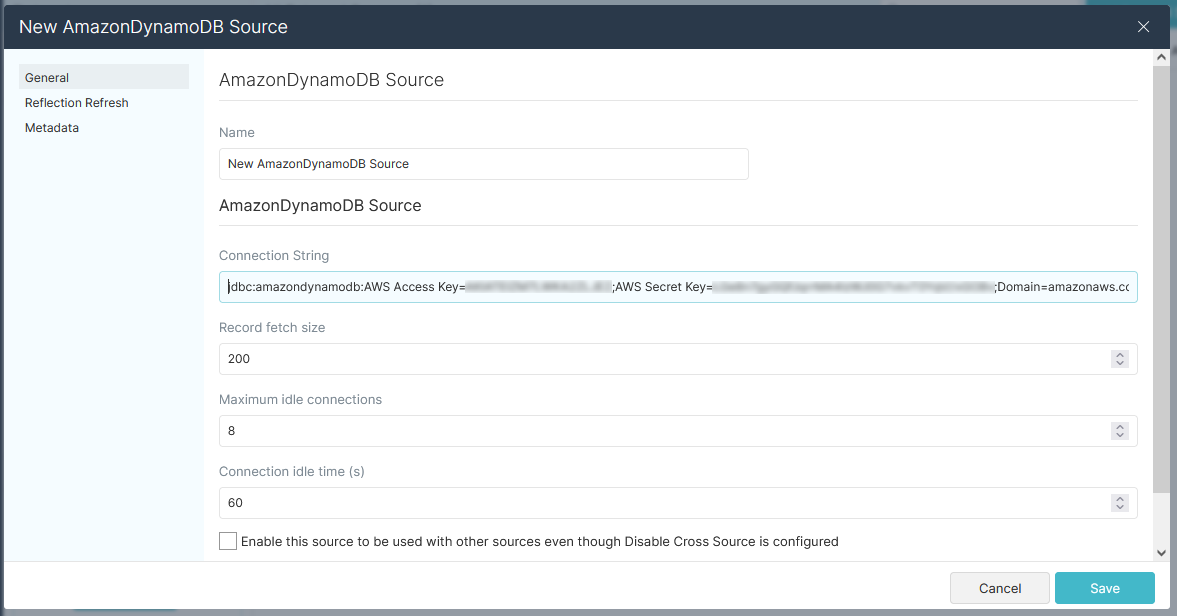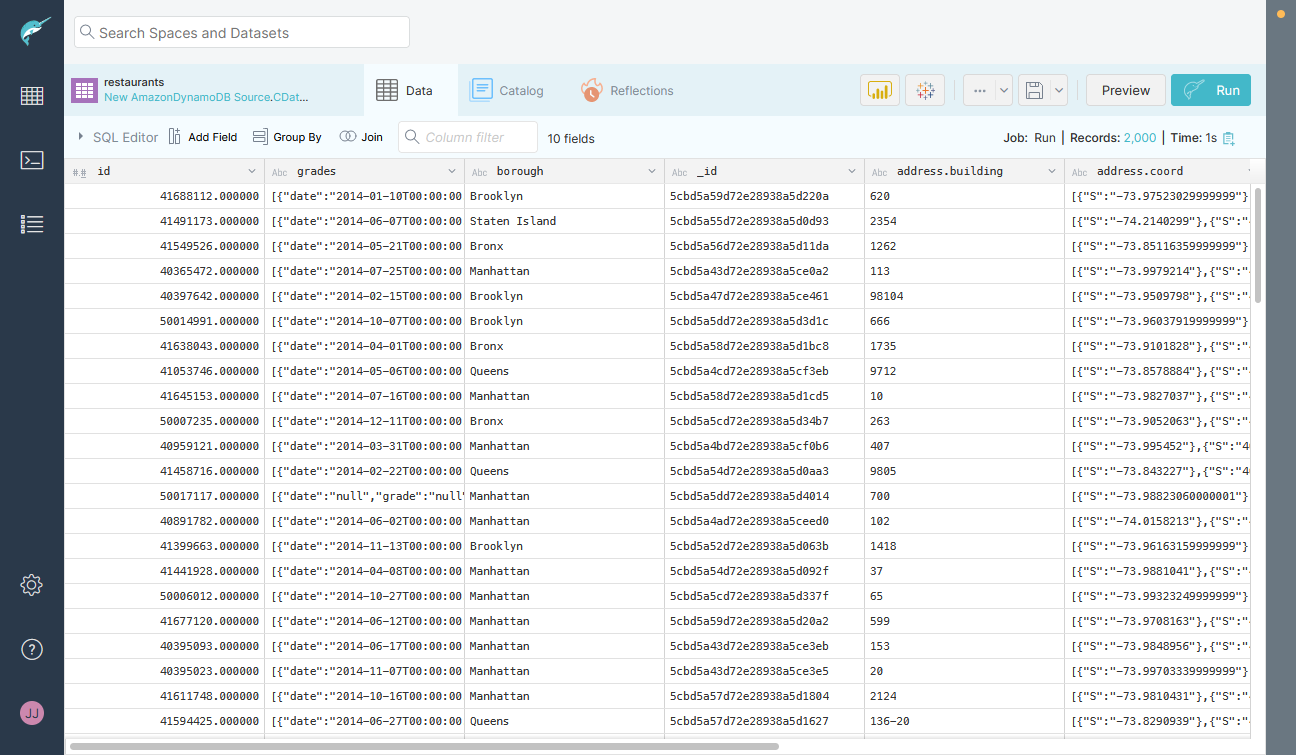Discover how a bimodal integration strategy can address the major data management challenges facing your organization today.
Get the Report →Connect to Okta Data in as an External Source in Dremio
Use the CData JDBC Driver to connect to Okta as an External Source in Dremio.
The CData JDBC Driver for Okta implements JDBC Standards and allows various applications, including Dremio, to work with live Okta data. Dremio is a data lakehouse platform designed to empower self-service, interactive analytics on the data lake. With the CData JDBC driver, you can include live Okta data as a part of your enterprise data lake. This article describes how to connect to Okta data from Dremio as an External Source.
The CData JDBC Driver enables high-speed access to live Okta data in Dremio. Once you install the driver, authenticate with Okta and gain immediate access to Okta data within your data lake. By surfacing Okta data using native data types and handling complex filters, aggregations, & other operations automatically, the CData JDBC Driver grants seamless access to Okta data.
Prerequisites
This article assumes you are utilizing Docker to run Dremio. You can create a Docker container with the Dremio service using a command similar to the follow:
docker run -d --name dremio -p 9047:9047 -p 31010:31010 dremio/dremio-oss
Where dremio is the name of the container, 9047 is the container's port for the Dremio web interface and 31010 is the port that maps to the Dremio query service. dremio/dremio-oss specifies the image to use.
Build the ARP Connector
To use the CData JDBC Driver in Dremio, you need to build an Advanced Relation Pushdown (ARP) Connector. You can view the source code for the Connector on GitHub or download the ZIP file (GitHub.com) directly. Once you copy or extract the files, run the following command from the root directory of the connector (the directory containing the pom.xml file) to build the connector.
mvn clean install
NOTE: The CData ARP Connectors are build to be compiled with Java 11. Be sure to install Java 11 and use the correct version. You can update your Java version using a command similar to the following:
sudo update-alternatives --config java
Once the JAR file for the connector is built (in the target directory), you are ready to copy the ARP connector and JDBC Driver to your Dremio instance.
Installing the Connector and JDBC Driver
Install the ARP Connector to %DREMIO_HOME%/jars/ and the JDBC Driver for Okta to %DREMIO_HOME%/jars/3rdparty. You can use commands similar to the following:
ARP Connector
docker cp PATH\TO\dremio-okta-plugin-{DREMIO_VERSION}.jar dremio_image_name:/opt/dremio/jars/
JDBC Driver for Okta
docker cp PATH\TO\cdata.jdbc.okta.jar dremio_image_name:/opt/dremio/jars/3rdparty/
Connecting to Okta
Okta will now appear as an External Source option in Dremio. The ARP Connector built uses a JDBC URL to connect to Okta data. The JDBC Driver has a built-in connection string designer that you can use (see below).

Built-in Connection String Designer
For assistance in constructing the JDBC URL, use the connection string designer built into the Okta JDBC Driver. Double-click the JAR file or execute the jar file from the command line.
java -jar cdata.jdbc.okta.jar
Fill in the connection properties and copy the connection string to the clipboard.
To connect to Okta, set the Domain connection string property to your Okta domain.
You will use OAuth to authenticate with Okta, so you need to create a custom OAuth application.
Creating a Custom OAuth Application
From your Okta account:
- Sign in to your Okta developer edition organization with your administrator account.
- In the Admin Console, go to Applications > Applications.
- Click Create App Integration.
- For the Sign-in method, select OIDC - OpenID Connect.
- For Application type, choose Web Application.
- Enter a name for your custom application.
- Set the Grant Type to Authorization Code. If you want the token to be automatically refreshed, also check Refresh Token.
- Set the callback URL:
- For desktop applications and headless machines, use http://localhost:33333 or another port number of your choice. The URI you set here becomes the CallbackURL property.
- For web applications, set the callback URL to a trusted redirect URL. This URL is the web location the user returns to with the token that verifies that your application has been granted access.
- In the Assignments section, either select Limit access to selected groups and add a group, or skip group assignment for now.
- Save the OAuth application.
- The application's Client Id and Client Secret are displayed on the application's General tab. Record these for future use. You will use the Client Id to set the OAuthClientId and the Client Secret to set the OAuthClientSecret.
- Check the Assignments tab to confirm that all users who must access the application are assigned to the application.
- On the Okta API Scopes tab, select the scopes you wish to grant to the OAuth application. These scopes determine the data that the app has permission to read, so a scope for a particular view must be granted for the driver to have permission to query that view. To confirm the scopes required for each view, see the view-specific pages in Data Model < Views in the Help documentation.

NOTE: To use the JDBC Driver in Dremio, you will need a license (full or trial) and a Runtime Key (RTK). For more information on obtaining this license (or a trial), contact our sales team.
Add the Runtime Key (RTK) to the JDBC URL. You will end up with a JDBC URL similar to the following:
jdbc:okta:RTK=5246...;Domain=dev-44876464.okta.com;InitiateOAuth=GETANDREFRESH
Access Okta as an External Source
To add Okta as an External Source, click to add a new source and select Okta. Copy the JDBC URL and paste it into the New Okta Source wizard.

Save the connection and you are ready to query live Okta data in Dremio, easily incorporating Okta data into your data lake.

More Information & Free Trial
Using the CData JDBC Driver for Okta in Dremio, you can incorporate live Okta data into your data lake. Check out our CData JDBC Driver for Okta page for more information about connecting to Okta. Download a free, 30 day trial of the CData JDBC Driver for Okta and get started today.





